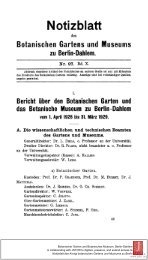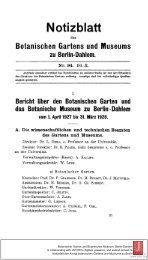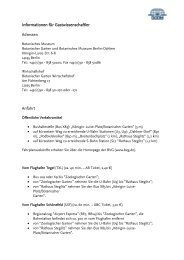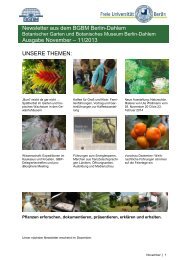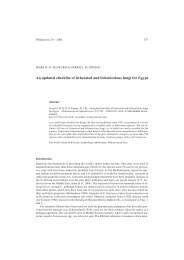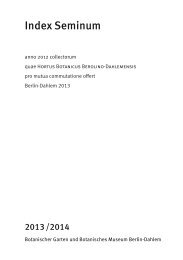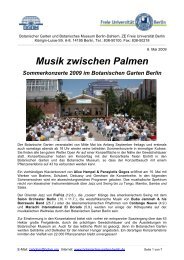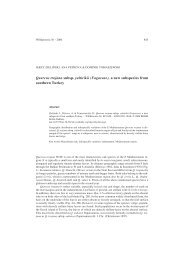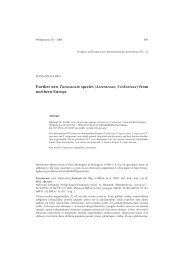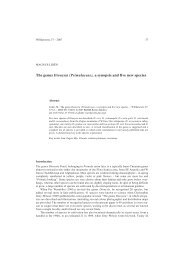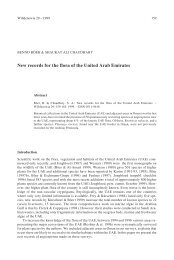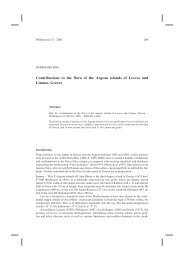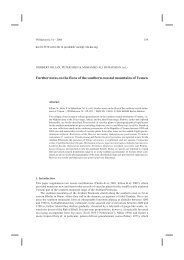Ausstellungskatalog - Botanischer Garten und Botanisches Museum ...
Ausstellungskatalog - Botanischer Garten und Botanisches Museum ...
Ausstellungskatalog - Botanischer Garten und Botanisches Museum ...
Sie wollen auch ein ePaper? Erhöhen Sie die Reichweite Ihrer Titel.
YUMPU macht aus Druck-PDFs automatisch weboptimierte ePaper, die Google liebt.
Präsentieren <strong>und</strong> Erklären 1910 – 2010 · Presenting and Explaining 1910 – 2010<br />
‘First Instruct, then Delight’: Visit to Dahlem, 1910 – 1950<br />
Despite what seemed to be such an ideal creation for the general<br />
public, and the popular-seeming notion of a world tour through<br />
a garden, the management of the Botanic Garden and Botanical<br />
<strong>Museum</strong> in Dahlem initially treated the public with astonishing<br />
inflexibility as far as opening times and guided tours for lay people<br />
were concerned. Only on four afternoons could the garden be<br />
visited free of charge, and up until 1943 the museum was in fact<br />
only accessible on Wednesdays and S<strong>und</strong>ays.<br />
In this garden informed by science, in which research and<br />
teaching played such an important role, the systematic section remained<br />
closed to the public until 1926. Visitors were not supposed<br />
to seek recreation here, as in a public park, but rather be open to<br />
‘instruction’ and to the serious observation of plant life. They were<br />
aided in this by the readily comprehensible guidebooks to the garden<br />
and the greenhouses written by Adolf Engler. Only from 1925<br />
was the garden open every day, and popular guided tours were<br />
offered. However, an entrance fee was now levied. Nevertheless Berliners<br />
loved the new garden from the start. They gladly wandered<br />
on S<strong>und</strong>ay afternoons through the artfully created Alpine regions,<br />
reached the Himalayas ‘without a passport’ and could dream of<br />
then inaccessible worlds. The plants’ scientific names and, where<br />
available, also their German names, were indicated on porcelain<br />
signs, and in the physic garden detailed labels shed light on the<br />
plants’ active components. The tropical economic plants met with<br />
great public interest thanks to current debates about the German<br />
colonies, and the flowering of Victoria amazonica was a further<br />
attraction, drawing visitors in droves.<br />
Wartime brought with it a change in the Botanic Garden’s relationship<br />
to its visitors. The instruction of visitors once promoted by<br />
Engler now consisted in guided tours to the useful and medicinal<br />
plants and in courses on the multiple applications of plants to<br />
the pressing needs of everyday life. Advice about mushrooms had<br />
become vital, and from 1946 to 1949, even maize, potatoes and<br />
vegetables were grown in the gro<strong>und</strong>s of the Botanic Garden as<br />
foodstuffs for the population of Berlin. MH<br />
BGBM, Bibliothek.<br />
137



